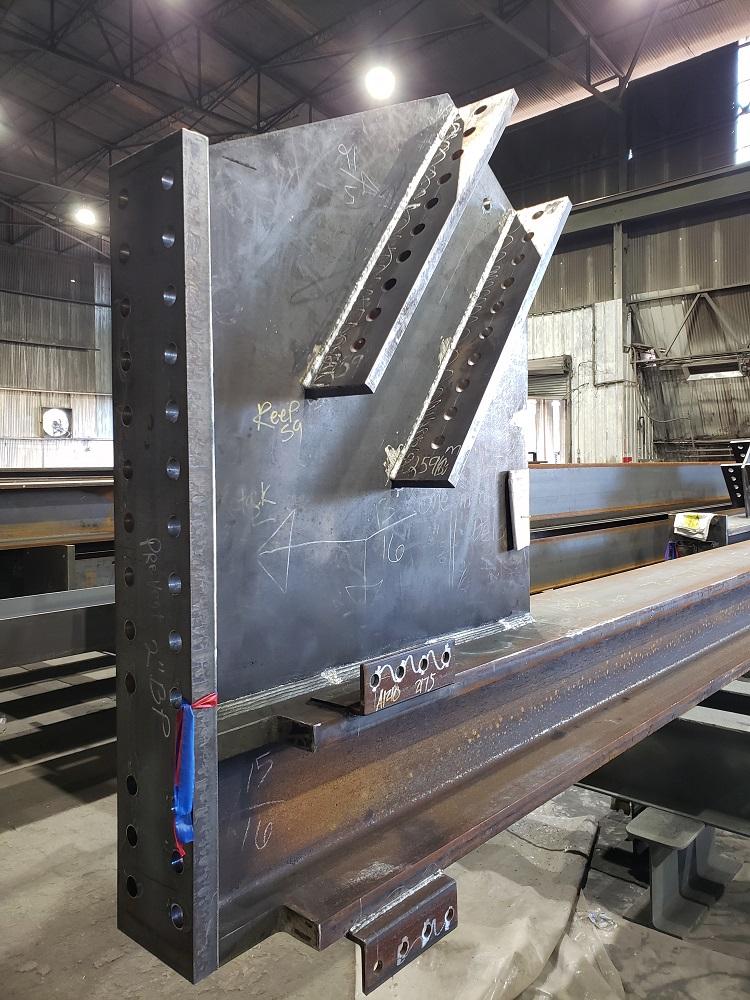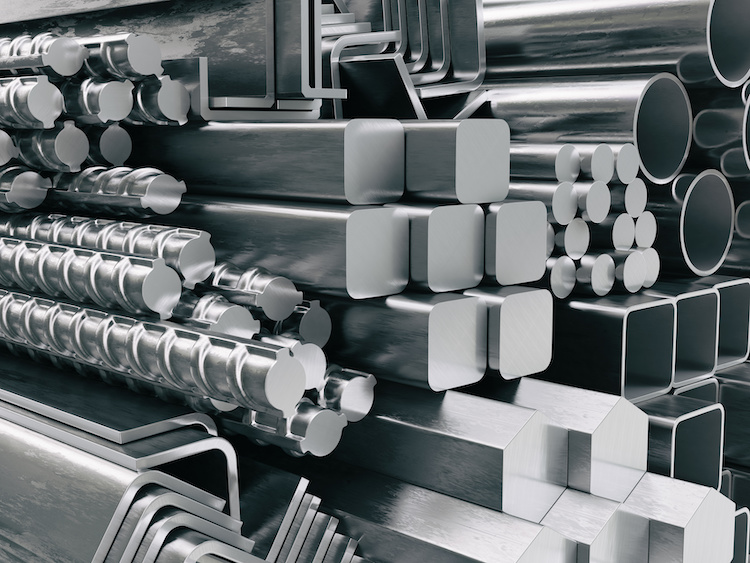Alpha Reo: Leading the Way in Reinforced Steel Solutions
Alpha Reo: Leading the Way in Reinforced Steel Solutions
Blog Article
Ingenious Trends in Steel Construction: Enhancing Durability and Precision
In the realm of steel fabrication, the search of toughness and accuracy has resulted in a wave of ingenious patterns that are improving the sector. From innovations in welding innovations to the integration of robot automation in construction processes, the landscape of steel manufacturing is progressing swiftly. High-strength alloy advancement, combined with the use of 3D modeling and simulation software, is pushing the boundaries of what is attainable in regards to structural stability and accuracy. The growing focus on sustainable techniques in steel manufacturing is not only driving efficiency however also promoting a much more eco aware technique to construction. These patterns are not just shaping today however likewise laying the groundwork for the future of steel construction, assuring further improvements in longevity and accuracy.
Advanced Welding Technologies
In the realm of steel construction, the adoption of advanced welding technologies has significantly transformed the sector's method to attaining exceptional quality and precision in architectural welds. Advanced welding technologies, such as laser light beam welding and friction mix welding, have become game-changers in the field. Laser beam welding uses a focused laser light beam to join steel parts with exceptional accuracy and rate, making it optimal for slim products and intricate styles. On the other hand, friction mix welding produces unbelievably strong bonds by mechanically intermixing the particles of the products at the joint, eliminating the need for thawing the steel. These technologies use many benefits, consisting of lowered heat-affected areas, very little distortion, and improved mechanical homes in the welded joints. By leveraging these sophisticated welding methods, steel makers can elevate the sturdiness, strength, and accuracy of their architectural welds, fulfilling the significantly requiring requirements of modern building projects.
Robot Automation in Fabrication
Welcoming robot automation has actually become a cornerstone of modern steel construction practices, streamlining procedures and boosting efficiency across the industry. Robots are reinventing the method steel elements are made, offering exceptional accuracy and rate while reducing human error. These automated systems can handle repetitive tasks with consistent accuracy, causing better end items.
One secret benefit of robotic automation in steel manufacture is the ability to work around the clock without exhaustion, dramatically enhancing production output. This constant procedure lessens downtime and accelerates task timelines, eventually conserving costs for producers. In addition, robotics can be programmed to execute detailed tasks that may be difficult or dangerous for human workers, improving safety and security in the workplace.
In addition, robotic automation enables seamless assimilation with various other electronic technologies, such as computer-aided style (CAD) software application and Net of Things (IoT) systems (steel fixing). This interconnected method boosts communication between different stages of fabrication, enhancing operations and guaranteeing real-time tracking and control. As the steel construction market remains to progress, robotic automation stands apart as a transformative pressure driving effectiveness and precision in producing processes

High-Strength Alloy Growth
The development of high-strength alloy advancement in steel manufacture is reshaping the sector's approach to boosting material resilience and performance. High-strength alloys are engineered to show remarkable mechanical buildings, such as raised tensile toughness, sturdiness, and corrosion resistance compared to typical steel qualities. By including these advanced alloys into fabrication procedures, producers can generate parts that withstand higher anxiety levels and rough atmospheres, resulting in more resilient and reputable end products.
One secret benefit of high-strength alloy advancement is the capability to decrease product thickness without jeopardizing structural integrity. This not only leads to lighter-weight elements however likewise adds to cost financial savings and enhanced performance in manufacture and setting up procedures. In addition, the boosted strength-to-weight ratio of these alloys permits the layout and building and construction of frameworks with higher load-bearing capacities while minimizing overall weight.
3D Modeling and Simulation Software Program
Developments in steel fabrication processes have been considerably propelled by the integration of sophisticated 3D modeling and simulation software program devices. These devices enable makers to produce thorough online designs of their jobs, enabling them to picture the end product with accuracy before any type of physical work starts. By imitating numerous tension elements, environmental conditions, and structural loads, producers can enhance styles for boosted toughness and performance. Additionally, 3D modeling and simulation software program improve the production process by recognizing prospective problems early, lowering the demand for costly rework and minimizing product waste.

Sustainable Practices in Steel Production
Integrating sustainable techniques right into steel production processes is essential for reducing environmental effect and ensuring long-term resource accessibility. One crucial lasting method is the adoption of energy-efficient modern technologies to minimize greenhouse gas discharges throughout the steel manufacturing procedure. This consists of using renewable resource sources, such as solar or wind power, to power steel plants and carrying out energy-efficient tools to maximize power usage.
Another important element of sustainable steel production is the liable sourcing of raw products. This involves making sure that the iron ore and other resources made use of in steelmaking are acquired from environmentally friendly and ethical sources. steel fabrication melbourne By advertising transparency in the supply chain and sticking to strict ecological requirements, steel producers can minimize the adverse influences of resource removal on regional environments and communities.

Verdict
In conclusion, the cutting-edge trends in steel construction such as sophisticated welding innovations, robotic automation, high-strength alloy growth, 3D modeling and simulation software application, and lasting techniques are improving the sturdiness and accuracy of steel items. These developments are reinventing the steel construction industry by enhancing quality, performance, and sustainability. It is clear that the future of steel construction lies in accepting these innovative modern technologies to fulfill the demands of contemporary building and construction and manufacturing industries.
In the realm of steel manufacture, the pursuit of sturdiness and accuracy has led to a wave of cutting-edge fads that are reshaping the market.In the world of steel construction, the fostering of cutting-edge welding innovations has actually considerably changed the sector's technique to attaining superior quality and precision in structural welds. As the steel manufacture industry proceeds to advance, robot automation stands out as a transformative force driving efficiency and precision in producing procedures.
In addition, recycling and reusing steel scrap and waste materials play a substantial role in boosting the sustainability of steel manufacturing. steel fabrication melbourne.In final thought, the ingenious patterns in steel fabrication such as innovative welding technologies, robotic automation, high-strength alloy development, 3D modeling and simulation software application, and sustainable techniques are improving the resilience and accuracy of steel items
Report this page